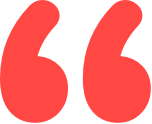
Head of Customer Content Experience

Audiology Expert & Founder

Digital Fatigue, Listening Fatigue and Hearing Loss
How to cope with digital fatigue and listening fatigue with hearing loss
We are in digital overload times
Digital and listening fatigue, also known as "digital overload" or "information fatigue syndrome," refers to the physical and mental exhaustion that can result from extended use of digital devices or from constantly listening to and processing information. It can lead to symptoms such as eye strain, headache, difficulty concentrating, and decreased productivity.
Digital fatigue and hearing loss
After the COVID pandemic, businesses have continued to incorporate working remotely within their staff's working week to various degrees. Hybrid and remote working is now very much a part of our lives. Because of this, we now live in a world of an ever-growing digital nation that is now experiencing high levels of listening fatigue.
We have taken to digital tools, platforms and accessories to reach out and communicate with family, and friends - as well as constantly communicating with colleagues as we continue hybrid working or working remotely.
Life and work balance has altered
The clear distinction between work and home life, for many, doesn't exist. The balance has tipped and we are experiencing every moment of life on our screen in front of us. Doing everything digital is now the modern-day workforce.
What causes digital eye fatigue syndrome and listening fatigue?
Skype, Zoom, webinars and other digital platforms have become our lifelines to communication, our way of 'keeping in the loop' and our everyday necessities. However, with this comes the after-effects of blue light, distorted viewing and strained listening - and that's for people who have 'normal' hearing.
Imagine the effects of all this digital access on those with hearing loss. Digital fatigue (or digital fatigue syndrome) and listening fatigue are real, relentless and growing!
Digital fatigue meaning
The digital fatigue definition or digital eye fatigue definition is mental exhaustion that is a result of watching, listening to and experiencing large levels of digital tools and apps. Physical discomfort is often experienced after long exposure to such devices. This is also known as digital eye strain and fatigue.
Listening fatigue meaning
Digital listening fatigue is due to prolonged exposure to auditory stimuli. Listening fatigue symptoms include tiredness, pain, discomfort and loss of sensitivity in some cases. This can be referred to as digital audio fatigue or digital listening fatigue.
Why is digital fatigue and listening fatigue worse for those with hearing loss?
People with hearing loss are challenged all the time with hearing, so this type of fatigue, unfortunately, hits them harder and faster. Those with hearing loss are known to have fewer stimuli than those with normal hearing, so it increases the symptom and episodes of listening fatigue.
Listening effort and fatigue
In short, hearing loss makes you tired. The reason is that our brain gives us the ability to hear and understand speech and sound. The hair cells in the inner ear turn these sounds into electrical signals through the auditory nerve and straight to the brain.
With hearing loss, the brain has to work much harder to make sense of and process all the gathered information it gets from the inner ear, which you can imagine - is both physically and mentally exhausting. Now add digital fatigue into the mix and the combination can be debilitating.
Digital fatigue symptoms and listening fatigue symptoms
Digital fatigue and listening fatigue can take various forms. These can be twinges in the back of your neck, eye twitching, eye pain (digital eye strain), intense headaches, dehydrated and sagging skin and loss of sleep.
The increase in the 'blue light' experience can change our skin cells and ultimately how much Melatonin (sleep hormone) we produce. This decreases the quality and duration of our sleep, so we are left feeling exhausted, unmotivated and unable to focus.
Digital fatigue breakdown:
- Sore or itchy eyes.
- Hard to focus.
- Watery or dry eyes.
- Double vision or blurred vision.
- Light sensitivity.
- Pain and discomfort in back, shoulders and neck.

Digital and Listening Fatigue
Digital fatigue statistics and listening fatigue statistics
- Digital fatigue research shows that in the UK studies have shown that 41% of the population are suffering from digital fatigue.
- These figures seem to be rising, as we continue to ride the wave of the pandemic, especially for 18-25-year-olds and 25-34-year-olds.
- 45% of the population showed that being online is essential for working remotely.
How to avoid digital fatigue and listening fatigue
- Manage your screen time
Set an alarm for yourself to monitor your screen time, so you always make room for breaks - especially after long virtual meetings. If you don't wear glasses, you can purchase 'blue light' glasses that will filter out this and protect your eyes against potential future damage. These glasses are called digital anti-fatigue lenses or digital eye fatigue glasses.
- Keep moving
When you do stop for a break, don't forget to step away from your screen and desk and move! This will increase your lymph flow, connect your muscles and improve your posture. Taking a short walk for some fresh air will also boost your mood and decrease stress.
- Prioritise sleep
We all know how important sleep is, but it is even more important to combat the unforgiving symptoms of digital fatigue. Keeping to a strict bedtime routine and ensuring that you don't use your screen an hour before you sleep will help you wind down and relax after the stresses of a full day of digital meetings.
- Wear your hearing aids!
Even though we may be working remotely from home, we still need to wear our hearing aids every day - it keeps the brain active and continues to process sounds. These devices are also very successful in reducing background noise, which you experience in digital conferences like Zoom.
You can also direct all your audio straight to your hearing aids and sync to Bluetooth assistive devices to make your digital working life much easier.

Digital Fatigue
How to make your digital meets easier
Extra useful tips for digital fatigue and listening fatigue
Here are a few tips on how to make your virtual communication easier with your colleagues and family.
- Use the mute option: Before your virtual meeting, agree amongst your colleagues or family on mute guidelines. For instance, those who aren't talking could mute their microphone to reduce background noise in the virtual environment. Ensuring better concentration and understanding of what has been spoken.
- Adjust the lighting: You may rely on speech-reading or facial expressions, if this is the case - ask the virtual members who are joining you to adjust their lighting so all faces are clear to see.
- Take turns to speak: This ensures that everyone has their turn to speak clearly, there are no interruptions, limited background noise and fewer complex sounds to process.
- Turn on captioning: If this is available to you on the virtual platform you are using, it is a great way to reconfirm visually what someone has said instead of relying on verbal communication first-hand.
- Make use of the recording option: Using this reduces the stress of missing something that might be important. Recording all your meetings gives you the chance to check or remind yourself of what has been discussed at a later date.
- Use the chat function: If you think you've missed something, this is a handy feature to get real-time confirmation during your meeting.
Can digital or listening fatigue be prevented?
Both digital fatigue and listening fatigue are common and not a nice thing to experience - especially if you work on computers a lot. The above tools are useful to help reduce the risk and change your digital habits with them, but you can also:
- Take breaks: It's important to take breaks from screens and other digital devices, especially if you have been using them for extended periods of time. Taking a break can help give your eyes and brain a rest and prevent fatigue.
- Use the 20-20-20 rule: Every 20 minutes, take a 20-second break and look at something 20 feet away. This can help reduce eye strain and fatigue.
- Adjust your workspace: Make sure that your computer screen is at a comfortable distance and angle, and that you are sitting in a comfortable and ergonomic position. This can help reduce physical fatigue and discomfort.
- Use eye drops: If you are experiencing dry eyes or eye strain, using artificial tear eye drops can help soothe and lubricate your eyes.
- Practice good posture: Maintaining good posture while using digital devices can help reduce fatigue and discomfort.
- Set limits: Consider setting limits on your screen time or the amount of time you spend listening to or processing information. This can help prevent digital overload.
- Get enough sleep: Getting enough sleep can help you feel more rested and better able to cope with the demands of using digital devices and processing information.
By taking these steps, you can help reduce the effects of digital and listening fatigue and improve your overall well-being.
Why Choose Us?
- FREE Hearing Tests
- Best Hearing Aids and Prices
- FREE Aftercare for Life
- FREE Home Visits
- 200+ Local Audiologists
- 60 Day Money Back Guarantee
Think your hearing has changed and need support or advice?
Call us free on 0800 567 7621 to speak with one of our audiologists who can go through all the features on your hearing aids that will help improve digital access or to discuss device upgrade options.
Read Next:
What's included in our hearing aid prices?
Our specialist service includes:
Do not spend hundreds of pounds without getting a second opinion from us.
Please call us on 0800 567 7621
 Not only are the prices great, but the service is fantastic! Many thanks to your team.
Not only are the prices great, but the service is fantastic! Many thanks to your team.Other pages you might find useful
Ask the Experts
6 Morton Lane
Walkwood
Redditch
Worcestershire
B97 5QA
Latest Launch
When we refer to a product as 'Latest Launch', we mean it is the latest to be released on the market.
New
When we refer to a product as 'New', we mean that the product is the newest hearing aid model on the market.
When we refer to a product as 'Superseded', we mean that there is a newer range available which replaces and improves on this product.
Older Model
When we refer to a product as an 'Older Model', we mean that it is has been superseded by at least two more recent hearing aid ranges.